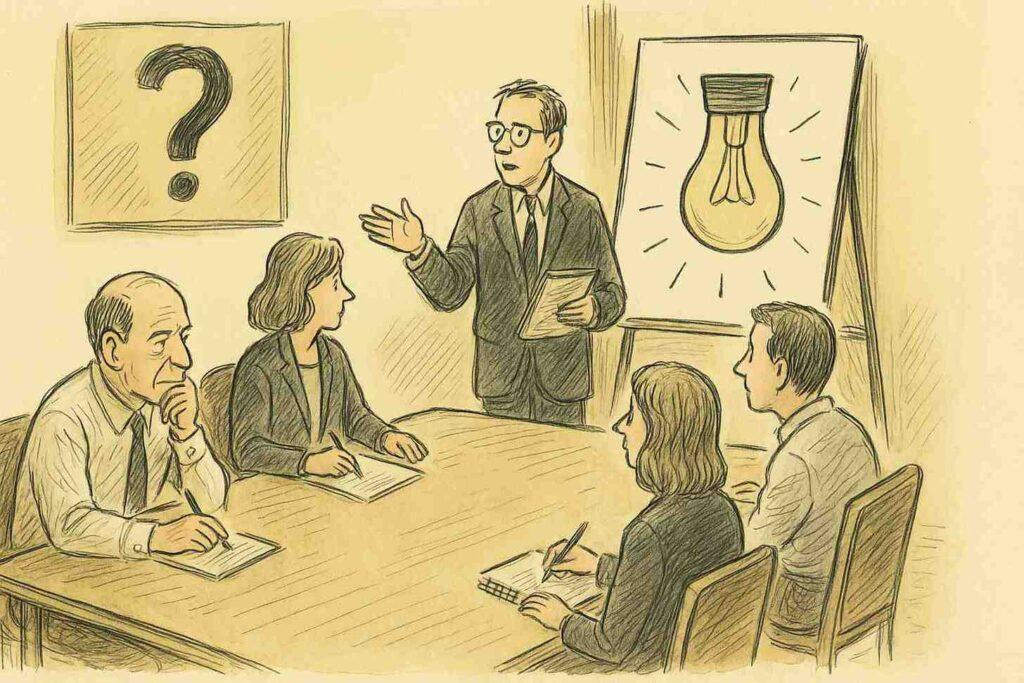What if the secret to success lies in thinking backward? The inversion mental model flips traditional problem-solving on its head. Instead of asking, “How do I win?” it challenges you to ask, “What would make me fail?”
This counterintuitive approach helps uncover hidden risks and forces critical thinking.
Take aviation, for example. Pilots use pre-flight checklists designed to prevent disasters by addressing potential errors upfront. Similarly, businesses analyze why customers leave rather than focusing solely on attracting new ones.
Studies from Harvard show companies using this strategy improve retention rates by up to 30%.
Legendary investor Charlie Munger popularized the inversion mental model, urging people to “always invert” tough problems. Ancient Stoics also practiced this through “premeditatio malorum” — imagining worst-case scenarios to prepare mentally.
By focusing on avoiding pitfalls, you create a roadmap to smarter decisions.
Key Takeaways
- The inversion mental model: Flip problems backward to identify hidden risks and errors.
- Checklists in aviation show how preventing failure saves lives.
- Businesses boost retention by solving why customers leave.
- Charlie Munger’s “always invert” strategy improves decision-making.
- Stoic philosophy uses similar thinking to build resilience.
Understanding the Concept of Inversion
How do we solve tough problems? Sometimes, applying the inversion principle by flipping them backward works better than pushing forward. Imagine planning a road trip by first listing what not to pack.
This “reverse engineering” approach, a key mental model, helps spot mistakes before they happen.
The Philosophy Behind Inversion
Ancient thinkers like the Stoics used this method to apply inversion and build resilience through the inversion mental model. They called it “premeditatio malorum” — preparing for worst-case outcomes. By asking, “What could go wrong?” they reduced fear of uncertainty using mental models of thinking.
German mathematician Carl Jacobi echoed this with his motto: “Invert, always invert.” His work showed how reversing equations revealed hidden solutions in the process.
Inversion Mental Model Origins and Historical Insights
Behavioral economists confirm this strategy aligns with human psychology. Studies show people fear loss twice as much as they enjoy gains. That’s why focusing on avoiding errors often beats chasing perfection.
Charlie Munger, Warren Buffett’s partner, famously said: “It’s remarkable how much long-term advantage we’ve gotten by trying to not be stupid instead of trying to be very smart.”
Today, this principle powers checklists in hospitals and decision frameworks for leaders. By starting with failure, we uncover risks hiding in plain sight — like forgetting sunscreen on that road trip.
The Inversion Mental Model in Practice

Success often comes from avoiding pitfalls rather than chasing perfection. Teams across industries use this reverse problem-solving strategy to tackle challenges smarter, often questioning the things that could go wrong.
Let’s explore how it works in real-world scenarios, as this inversion principle can help achieve the goal of improving life outcomes.
Applications in Aviation and Business
Pilots rely on pre-flight checklists not to achieve greatness but to eliminate errors. By focusing on what could go wrong, they’ve reduced fatal accidents by 83% since 1997.
Similarly, companies like Amazon analyze why customers leave instead of obsessing over new sign-ups. Harvard research shows this approach boosts retention by 30% — turning exits into opportunities.
Lessons from Finance and Behavioral Economics
Investors like those following Charlie Munger’s methods avoid bad bets by asking, “What would destroy this portfolio?” Behavioral studies reveal people feel losses twice as intensely as gains.
This explains why teams prioritizing risk prevention often outperform those chasing “home runs.”
Product managers use pre-mortems to spot flaws before launch. One tech firm discovered 12 hidden bugs this way — saving $2M in potential fixes. When you start by listing failures, you create a roadmap to dodge them.
The Inversion Mental Model: How-To Guide
Ever wondered why some plans crash while others soar? The answer often lies in flipping your approach. Instead of starting with success, begin by mapping out every possible disaster. This powerful inversion mental model turns “what if?” into your secret weapon for smarter choices, helping you solve problems and avoid pitfalls.
By considering various models and examples, you can question assumptions about your products and ultimately enhance your decision-making mind.
Identifying Failure Scenarios
Start by asking: “What would make this project implode?” Teams at companies like Spotify use the “kill the company” exercise — brainstorming ways their product could fail.
One SaaS team discovered 14 overlooked risks this way, including payment system crashes that cost 40% of users.
Product managers boost conversion rates by listing reasons customers abandon carts. One e-commerce brand fixed 8 checkout problems through this reverse problem-solving, recovering $1.2M in lost sales annually.
Utilizing Pre-Mortems and Checklists
Imagine your goal failed spectacularly. Write the post-mortem before launching. A fintech startup did this and spotted 11 flaws in their app design — like confusing password requirements that blocked 22% of sign-ups.
Create checklists that answer: “What mistakes must we avoid today?” Nurses reduced medication errors by 67% using this strategy. Try this simple template for decisions:
- List top 3 failure causes for your goal
- Identify early warning signs for each
- Assign one preventive action per risk
Charlie Munger once said, “All I want to know is where I’ll die so I’ll never go there.” By focusing first on pitfalls, you build guardrails that guide you toward success — whether you’re launching products or planning weekend projects.
Benefits of Focusing on What to Avoid

Why do some teams stumble while others glide smoothly toward their goals? The answer often lies in spotting pitfalls early. By prioritizing what not to do, teams save time, reduce wasted work, and build stronger customer relationships.
For example, by applying inversion, teams can make decisions that focus on avoiding potential issues rather than just chasing success. This powerful approach helps identify the things that could derail progress.
Reducing Error Rates and Uncovering Hidden Risks
Think of a chef who cleans knives first to avoid cuts. Studies show teams using this mindset cut errors by 30%. Airlines, for example, lowered maintenance issues by 83% using checklists that target “what not to miss.”
Businesses gain similar wins. One retailer fixed checkout errors causing 15% of customers to abandon carts. Their solution? Focus on removing friction points instead of adding flashy features. Retention jumped 22% in three months.
| Approach | Focus | Error Rate | Customer Impact |
|---|---|---|---|
| Traditional | Chasing success | +12% | Low satisfaction |
| Preventive | Avoiding failures | -30% | Higher retention |
This perspective shifts how teams work. Software developers now spend 20% of project time listing “disaster scenarios.” One fintech team found 8 hidden bugs this way — saving six months of rework.
Time invested upfront pays off later. As one engineer put it: “We work backward from worst-case outcomes. It’s like packing an umbrella before the storm hits.”
Learning From What’s Broken

What separates thriving companies from those stuck in endless fire drills? Often, it’s their ability to learn from what’s broken. Let’s explore how teams turn problems into progress.
Improving Customer Retention and Product Decisions
A SaaS company slashed churn by 40% by focusing on why users canceled. They discovered confusing navigation caused 62% of exits. Simple fixes — like a redesigned dashboard — rebuilt trust and kept clients engaged.
Another team boosted app performance by listing “dealbreaker bugs” before launch, cutting negative reviews by half.
Strategies for Leaders and Teams
Try these steps to sharpen your strategy:
- Host weekly “reverse brainstorming” sessions: “How could we lose 20% of customers next quarter?”
- Create pre-launch checklists asking: “What’s missing that would ruin this release?”
- Reward employees who spot hidden risks early
One fintech leader attributes their 25% faster growth to this approach: “We spend Mondays imagining disasters. By Friday, we’ve built solutions to prevent them.” This balance of innovation and caution drives reliable results.
| Traditional Approach | Inversion Method | Outcome |
|---|---|---|
| Chasing new features | Fixing pain points | +22% retention |
| Assuming success | Testing failure scenarios | -35% support tickets |
Teams that trust this mindset spend less time putting out fires. As one product manager noted: “Our best ideas come from studying what frustrates users. It’s like having a roadmap written in complaints.”
Mastering The Inversion Mental Model

What if the key to smarter choices isn’t just moving forward but also looking back? Top decision-makers like Charlie Munger don’t just solve problems — they dissect them backward.
“It’s not enough to chase success,” Munger once said. “You must first avoid failure by asking, ‘What would make this plan blow up?’”
Charlie Munger’s Approach and Other Perspectives
Munger credits his success to flipping challenges upside down. Instead of asking how to grow investments, he’d ask: “What would destroy wealth?” This thinking backwards tactic helped him dodge market crashes others missed.
Behavioral scientist Daniel Kahneman agrees, noting that teams fixated on the status quo often overlook hidden risks. “The upgrade your thinking happens when you challenge assumptions,” he explains.
Integrating Multiple Mental Models for Better Decisions
Great leaders blend strategies like inversion with tools like Occam’s Razor or First Principles. Imagine planning a product launch. First, list what could alienate users (inversion). Then, simplify features (Occam’s Razor).
Finally, rebuild from core needs (First Principles). This combo helps teams make decisions that balance innovation with practicality.
| Traditional Approach | Blended Models | Outcome |
|---|---|---|
| Focus on ideal outcomes | Analyze failure paths first | 30% fewer setbacks |
| Stick to known methods | Mix 3+ decision frameworks | 2x faster problem-solving |
One tech CEO shared how this method transformed meetings: “We spend 10 minutes asking, ‘What looks like a surefire win but might backfire?’
It’s reshaped how we hire, design, and negotiate.” By pairing inversion with other models, you turn blind spots into guardrails.
Conclusion
True progress often begins by asking unexpected questions. Instead of chasing success stories, thriving teams focus on eliminating what’s broken. From Amazon’s customer retention wins to SaaS teams slashing churn rates, the proof lies in flipping problems backward.
Business leaders using the inversion mental model see 30% fewer errors and faster growth. As Farnam Street’s decision-making philosophy teaches:
“Avoiding stupid choices beats chasing genius.” This mindset helps new business ventures dodge common traps — like launching features users don’t need.
Want simpler wins? Start small. Product teams now ask: “What would make customers hate this update?” Nurses using checklists cut medication errors by 67%. Even personal goals benefit — planning vacations by listing “worst-case scenarios” leads to smoother trips.
Remember: measurable success often comes from avoiding consistently stupid mistakes, not chasing perfection. What disaster will you prevent tomorrow?


